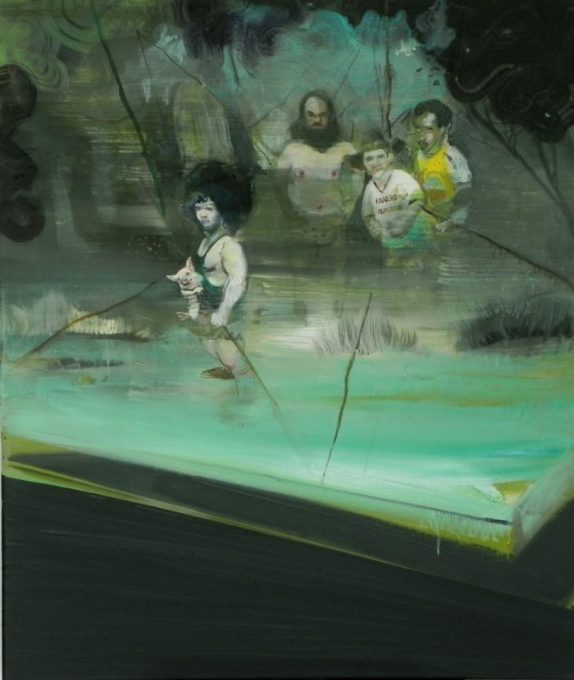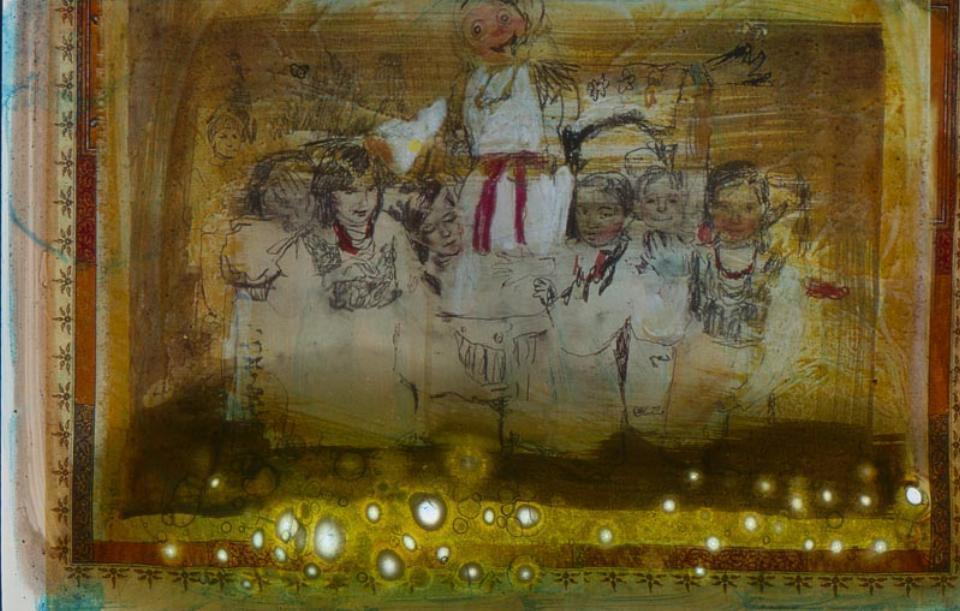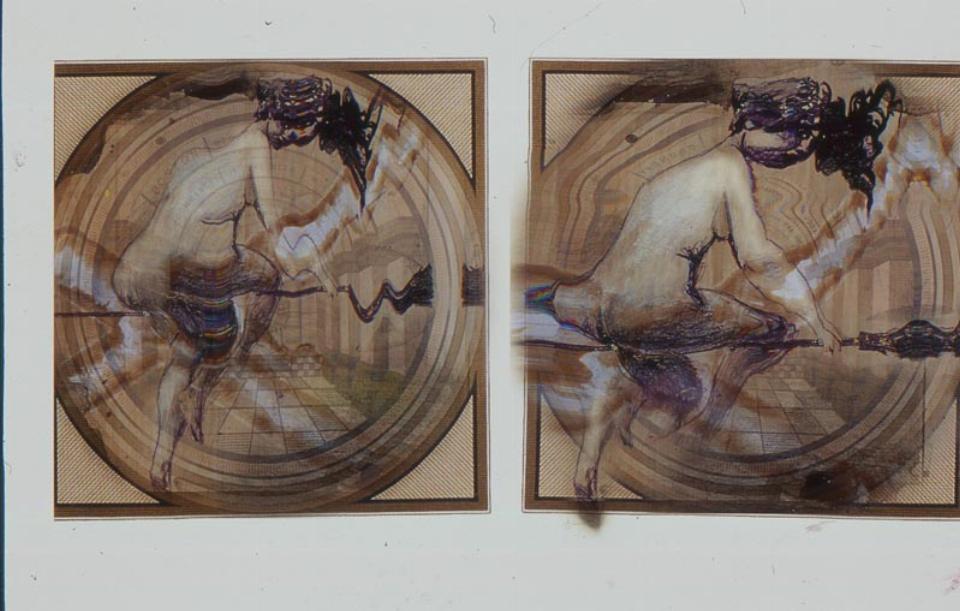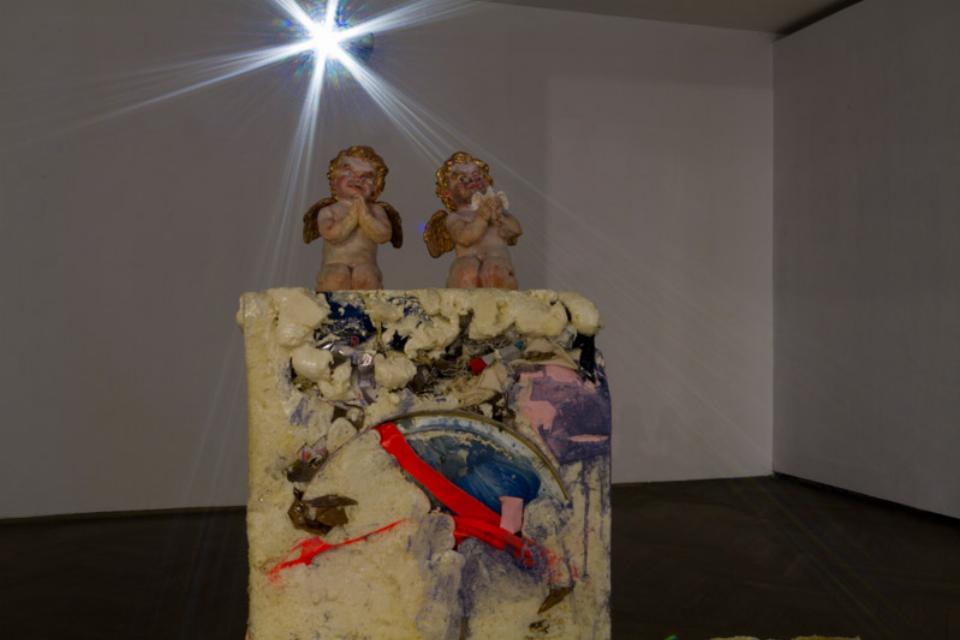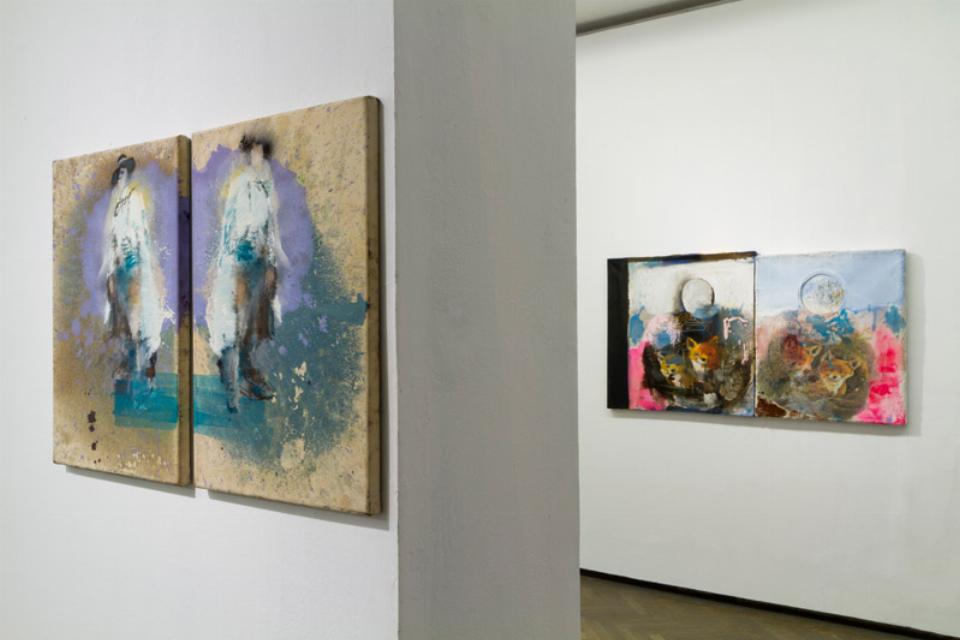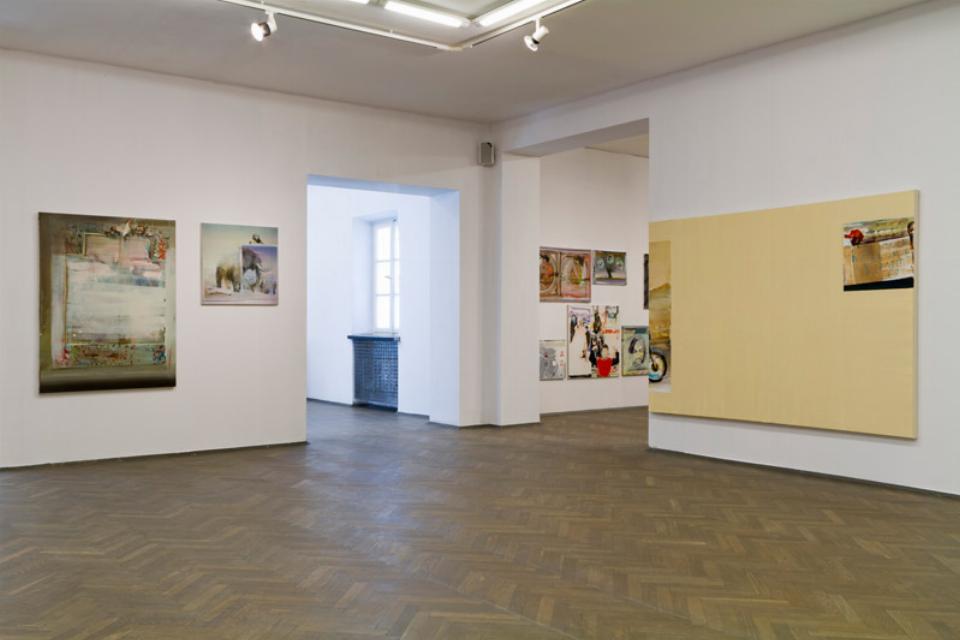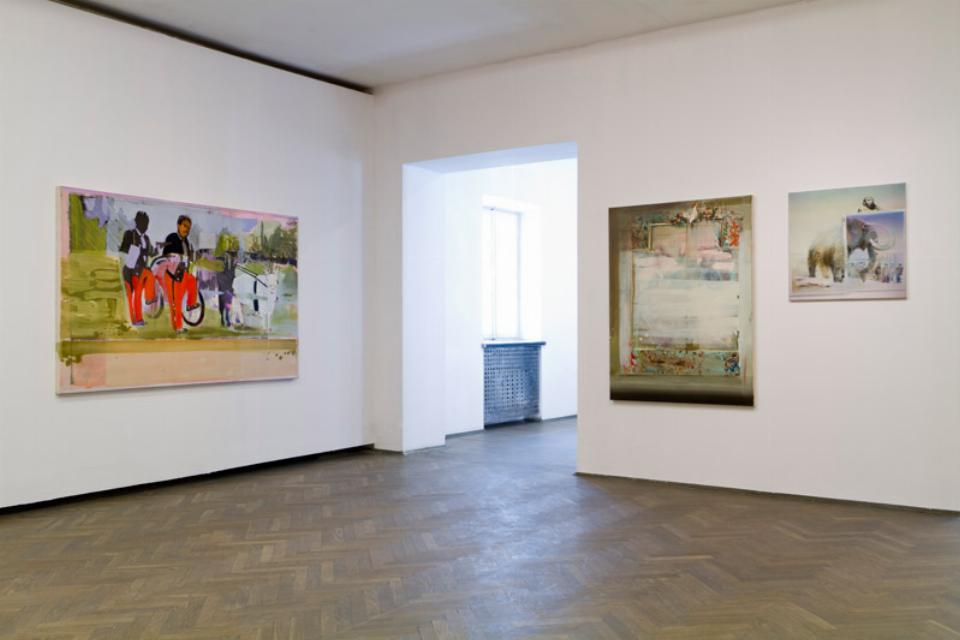RADEK SZLAGA – Dreams / Icons
The Power of Imagination or the Curse of Visibility
Radek Szlaga’s bestiary is a limitless inventory from which the painter selects ever more bizarre figures: black highlanders, dwarfish wrestlers (the enigmatic Freedom Club group), robust females who tame wild animals, plump fast-food lovers, sports fans, tramps, Ted Kaczynski, Charles Manson, Fiats 126p, city and country livestock, mammoths, troglodytes, people suffering from microcephaly, and circus performers. The abundance of motifs and tropes, visual density, mutations, distortions, and unrestrained growth are all coherently packed within the picture frame, as if they were glued together by means of an absurd yet intelligible design. Is it the power of imagination or the curse of visibility? Are they dreams, or are they icons?
Radek Szlaga seeks to find a source, as if he was searching for a volcano which allows the thick magma of his peculiar imaginary representations to erupt. They are both so importunate and captivating that one feels immediately impelled to depict them on canvas, to give vent to them, to materialize them, to make them visible outside. The meaning emerges later when the artist gets down to the process of painting, when he decides about the composition, narrative or story. If one views painting from such a perspective, a particular meaning is hardly ascribed to a concrete representation; instead it lurks somewhere among the signs, in the pivotal points and the material that binds the image together. The essence of things remains hidden in the syntax, i.e. the conscious process of combining ostensibly incompatible elements into a lucid whole. Such a construction is built in accordance with clearly defined precepts of painting and the knowledge and skill obtained through education. Szlaga employs proven methods of creating a comprehensible message that fall in line with the art of painting. Yet because these connections are not even remotely obvious and the characters and objects depicted in the paintings are highly unusual, Szlaga’s works appear to represent a proliferation of contradictions.
Szlaga’s art relies on the intuitive dimension, which is not to say that it is primitive, even though the painter indeed portrays primitive characters. To me, the word intuitive implies that while embarking upon the process of creation the artist operates somewhat instinctively, half-consciously as if. It is only later that deliberate calculation emerges, accompanied by formulating the message that the artist intends to convey to his audience; people and objects come first and the relations between them are initiated subsequently. However, it would be wrong to assume that the creatures that populate the canvas have not acquired their own individual meanings earlier, and that their presence there is a matter of mere chance. The images of Ted Kaczynski may be treated as a symbol of ambition and genius that have turned into madness, violence, evil or the apocalyptic end of the world[1]. The portraits of Charles Manson share a similar iconic quality. At the other end of the spectrum are the figures of troglodytes in which Szlaga tries to return to the beginning: when the naïve way of thinking about the world was not marred by any ideologies. The artist himself deems the narrative the most significant element in his paintings; to him, much of their value lies in the unexpected turns of the plot, and not in paying close attention to the depictions themselves thus abstracting them from the given context. For instance, in the painting entitled Symulacje (simulations) it is the moment when the cavemen scribble images of mammoths on the walls which serves to tell the story that unfolds outside the cave painting but within the boundaries of the world set in motion/painted by the artist. In Dyptyk (diptych) Szlaga depicts a Neanderthal who proudly holds a “modern painting” which shows a genre scene that stretches beyond the painted frame and develops outside it, in the scene with the Neanderthal. Is it a painting within a painting, a painting on a painting, or perhaps an image of a painting? Which of them is the original, which is a mere copy? Every narrative, no matter how naïve and ludicrous it may be, serves as a springboard for a more profound reflection on the ontology of a painting. Yet instead of striving for minimalism, asceticism and clarity of form, the artist generates an excess. The modernist motto “less is more” has been substituted with postmodernist chaos, crush and commotion. Szlaga finds such a multiplication inspiring, and at the same time leaves some space for understatements in his tightly woven narrative. He contorts the motifs and confuses the tropes to challenge his audience to a remarkably complex riddle, infused with a great deal of irony.
In his latest project, SNY/IKONY (dreams/icons), Radek Szlaga tries to achieve the unattainable: he seeks to isolate the figments of his own imagination from the images that belong to the already existing infinite iconosphere of the world. Does this attempt stem from the excessive activity of the visual receptors or does it, perhaps, result from over-productive imagination? The former cannot exist without the latter. William J. Thomas Mitchell suggests that if a real image is what we have in our heads, the world could well exist without us, but our awareness and pictorial production could not exist without the world. Had human thought not fed on the visible world, the very process of cognition would have lost its sense[2]. Regardless of the objectively existing reality, the human being provides a place for the image. It is in his body where images are produced, recognized, memorized, stored and preserved[3]. If we assume that the reality we observe looks roughly the same to everyone, then it must be the extra-visual perception, the constant vigilance of the other senses, that makes an image acquire a particular shape and an idiosyncratic meaning in our body. Such an image frequently undergoes modification, putting human memory at a test. The body, on the other hand, cushions our encounter with the excess of stimuli that evade rational cognitive categories. The body preserves our impressions and prevents them from being sifted though consciousness. Such images are transient; we do not know where they come from and where they are heading, when we forget about them and when they unexpectedly return to us. The question is what form they take when they are back and in what context they reappear. Are we dealing with a relocation of memories here? This is what the performative function of memory amounts to: it changes the shape of the past, which is constantly modified by the present and by the individual predispositions of the person who recalls this past.
The artist seems to have got confused in the complex game of appearances. On the one hand he has lost faith in the authenticity of things, adhering to Baudrillard’s notion that the signifier and the signified have parted company, and, on the other, he doubts his own perception that invariably belies the reality, disturbing the order of history and blurring chronology. Everything melts into a viscous wobbly mass, not to say a lump. No ingredient has been left intact. Szlaga wants to show the moment when two image worlds meet and confront each other: one of them belongs to him, Radek Szlaga, alone, and the other is the world of the media. Which of them has been colonized, degraded and destroyed? Can it be that the answer lies in the video that depicts the site of a fire: burnt cars placed in a typical white cube space, covered with a cloud of pitch-black smoke behind which the paintings hanging on the wall shimmer?
Anna Czaban
Translated by Katarzyna Sawicka
[1]The Endis the title of Radek Szlaga’s exhibition that opened in November, 2011, at the Ochs Gallery, Berlin.
[2]Mitchell, William J. Thomas. “What is an Image?” New Literary History: A Journal of Theory and Interpretation 15, no. 3 (Spring, 1984): 503-537.
[3]Belting, Hans. Antropologia obrazu. Szkice do nauki o obrazie. Kraków: Univeristas, 2007.
Radek Szlaga

PLAN YOUR VISIT
Opening times:
Thuesday – Sunday
10:00-18:00
Last admission
to exhibition is at:
17.30
